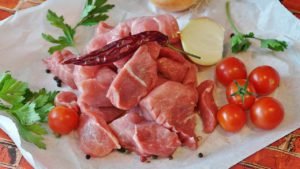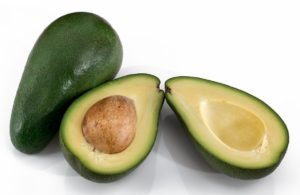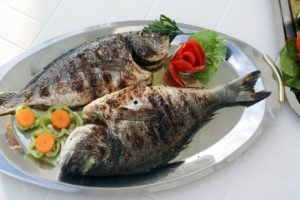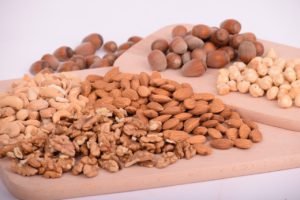Classic Guacamole Recipe: Fresh and Flavorful Dip
A creamy delectable dip made with the goodness of avocados. Try this quick and easy guacamole recipe to serve at your next fiesta.
A creamy delectable dip made with the goodness of avocados. Try this quick and easy guacamole recipe to serve at your next fiesta.
Today I’m sharing another post from my friends over at MadeByHemp. Since it’s Monday and the start of a brand new week, what better way to start than to share some tips on how you can increase productivity? No, it’s not about recipes, but Read more
In my weight loss journey, I have tried several diets and meal plans in my efforts to lose weight. Out of all the diets, I have tried, the only one that works and that I can easily sustain is the low-carb diet. I came to this conclusion after following several diets including the Six-Week Body Makeover, the Whole 30 Diet, the Mediterranean Diet, the Vegan Diet, The Gabriel Method, the Paleo Diet, and finally the Keto Diet.
I lost very little weight after following most of these diets, and I came to realize that my body is sensitive to sugar and carbohydrates. This is to say that my body quickly converts carb-rich foods into sugar and then into fat. The first diet that allowed me to lose inches but not weight was the Keto diet.
I was onto something with the Keto diet, but following the Keto diet long-term is not sustainable nor, in my opinion, advisable. So, what’s the difference between a low-carb diet and the keto diet? Don’t they both call for eating very few carbs? Well, yes and no. In this post, I’ll detail the difference between the two and how you can eat low-carb for effective and sustained weight loss.

A low carb diet entails adjusting daily dietary macro-nutrients by drastically cutting the amount of carbohydrates while simultaneously increasing the amount of fats. Proteins are consumed in moderation on a low carb diet. The Atkins Diet is a classic example of a low carb diet that starts out extremely low carb and gradually increases the levels of carbohydrates as weight-loss goals are achieved.
The Keto Diet also drastically cuts the levels of carbs but where it differs from Atkins is that in the keto diet, carbs are never increased and fats are used as the primary source of energy. So how many carbs are we talking about when we low carb? Dietary guidelines recommend between 45% to 65% of our calories be from carbohydrates. This means that a person on a 2,000 calorie diet would consume between 225 to 325 grams of carbs each day.
On a low carb diet, you would cut down the amount of daily carbohydrates to between a low of 50 grams to no more than 150 grams of total calories. On a commercial diet like Atkins, the recommendation is to start at 20 grams for two weeks before gradually increasing the amount until you reach a maintenance stage where you know how many carbs you should eat and not gain weight.
The keto diet recommends you eat only up to 20 grams of carbs per day. Maintaining a diet with this amount of carbs enables you to achieve and stay in ketosis (using fat for energy) for the rest of your life. Many people have found success with keto and some have even been cured of disease like epilepsy and type 2 diabetes. However, I’ve come to believe that it’s not healthy to stay on the keto diet on a long term basis.
Instead, I follow my own version of a low carb diet and allow myself up to 50 grams of carbs each day. I find this works well for me but you should tweak your levels to see what works for you. Next up, preparing to start a low carb diet.
The first thing you need to do when trying to go low carb is to prepare for the plan by cleaning out your pantry and fridge of all high-carb foods. This means you have to remove bread, chips, crackers, muffins, potatoes, sugar and all other high carb foods and sweets. Once this is done, you will have a clean slate to restock with suitable foods to eat on a low carb diet.
Keep in mind that you may have some withdrawal symptoms at the beginning of going low carb and you will be sure to have cravings for high carb foods. There are ways to ameliorate the suffering so fear not. The first thing you will need to do is to restock your pantry and fridge with low-carb replacements and substitutes for high-carb foods like flour, honey, sugar and high carb vegetables like potatoes, beets, and rice. Luckily there are lots of healthy substitutes available in your local supermarket or online, and if you don’t have time or don’t like to cook, you can try a meal prep service like bistromd.

I go into the various types of low carb flours you can try in my post on low carb flour substitutes, but I’ll just mention a few here to get you started. Keep in mind that you will have to search for recipes using these alternative flours and your results will not be exactly the same as using traditional wheat flour unless you use einkorn flour. Some low carb flour substitutes you can use to create bread, flatbread, rolls, muffins, cookies, and other baked goods include:
You can find tons of recipes online and on this blog that use these products to recreate high-carb baked goods. Keep in mind that you’ll also have to find substitutes for sugar, syrups, honey, and other sweets. My post on sugar alternatives for diabetics offers a great list for sugar/sweet substitutes.
Using this combination of flour and sugar substitutes makes low carbing much easier and bearable. The next step involves adjusting other macronutrients like fats and proteins to make up for the drastic lowering of carbohydrates. I’ll first discuss the role of fats in the low carb diet.

If you’ve done any research on how we process foods, then you know that carbohydrates are the preferred energy source for our bodies. Carbohydrates are broken down or processed rather quickly starting in our mouths where salivary amylase starts the digestion process. The process is very efficient and our bodies are very good at breaking down and storing carbohydrates.
The problem comes in because we consume entirely too many carbs in the typical American diet. We start our days with carb-laden breakfasts containing foods like bagels, donuts, muffins, toast, home-fries – you get the idea! Then we follow up with lunch, snacks, and dinner that also contain high levels of carbohydrates. The over-abundance of carbs forces our bodies to store this excess energy as fat.
Nonetheless, we use fats in the low carb diet to replace these carbs and force the body to use fat as the preferred energy source. The main concept behind using fats when low carbing is that fat is energy-dense and keeps us feeling full for longer. Eating high levels of fat makes you feel full but still lets you be calorie-deficient. Being calorie-deficient means your body needs more energy but because you’re full, you won’t eat more. This, in turn, forces your body to burn body-fat to make up for the calories you’re not eating. Ingenious isn’t it?
Commercial diets like Atkins and Keto advise eating high levels of fats – between 45% to 75% of calories or up to 167 grams per day. They encourage any and all fat sources including lard, fatty foods like bacon, cheese, eggs, steak, burgers, etc. In other words, a hefty amount of saturated fats. I faithfully followed the keto diet for 9 weeks, but in the end, I came to one conclusion regarding fats.
I now believe that we should strive to eat high levels of good fats like the mono and unsaturated fats found in foods like avocados, MCT oil, fatty fish, nuts, etc. I’d also advise against eating many of the foods advocated by commercial diets including lots of butter, lard, and other foods containing high levels of saturated fats. Too much saturated fat causes inflammation which in turn causes other nasty health conditions like auto-immune diseases and cancer.
The final important macro-nutrient we’ll discuss is protein and how it helps us in weight loss while on a low carb diet.

Protein is the second most important macro-nutrient when it comes to following a low carb diet. Protein’s role is dual: it helps to keep us full for longer periods and it helps us to maintain and build muscle. The last point is especially important for anyone on a weight-loss diet. This is because many of us tend to lose muscle instead of fat when we maintain a calorie deficit and exercise while dieting. Protein helps to stave off this phenomenon.
Moderate amounts of protein is recommended for anyone following a low carb diet. This means that a person should eat .7 to .9 grams of protein for every pound of body weight. By adding adequate amounts of protein we can boost the effectiveness of our weight-loss regimen by maintaining and growing the muscle needed for continued fat-burning. Too much protein can stop ketosis and ultimately be converted to glucose (sugar). Moderation is the key.
As mentioned, commercial diets recommend sourcing protein from foods like burgers, steak, bacon, and pork. These are fine, but I recommend looking for cleaner sources of protein like grass-fed bison/beef, cage-free eggs, wild-caught salmon, and free-range poultry.

The last component to eating low carb is to incorporate low carb and nutrient-dense vegetables into your diet. Read my post on the best foods for weight loss for ideas of some great ideas on the types of vegetables to eat. Just to mention a few, make sure you include green leafy vegetables, asparagus, bell pepper, tomatoes, cucumbers and green beans and fruits/berries like strawberries, blackberries, raspberries, avocados, coconut, cantaloupe, watermelon, lemons, and peaches.
As long as you prepare in advance with the right pantry and fridge items you will be well on your way to effectively following a low carb diet. Determine where you want to start in terms of daily carb intake and make sure to track your calories and macros by using apps like cronometer or myfitnesspal.
Follow these tips and you can safely lose up to 2 pounds each week – a sustainable level that is good for you and will not stress or shock your system. You might not believe just how easy this weight loss thing can be! Try it out and let me know in the comments how it works for you. Until next time, Happy Eating!
I first discovered dehydrators when I was on the Paleo diet and looking to replicate foods like dried game meats and venison that were eaten by our Paleolithic ancestors. Dehydrators are used to dehydrate or dry out the moisture from organic and inorganic matter. Read more
The majority of this blog focuses on illustrating how we can use food and recipes as catalysts for weight loss and overall good physical health. However, to achieve a balanced and happy life, it is just as important (if not more so) to have Read more
As long as we are eating the right kinds, food is the cure for much of what ails us health-wise. When it comes to losing weight, we might feel that eating less food will help us in our quest. However, not eating enough is as much a culprit in us gaining weight as is eating too much.
To lose weight safely and effectively, we have to use the right foods in a balanced way. For this post, I’ll focus on some of the best foods for weight loss available to anyone seeking to lose weight or to enhance their general well-being. These are foods that are easy to acquire from any well-stocked supermarket or if you prefer, you can purchase online and have them delivered to your home.

Avocados saved me during my stint with the keto diet and it continues to aid my weight loss goals today and every day. Avocados are among the best foods for weight loss for several reasons a few of which I’ll discuss here. First of all, what exactly is an avocado?
The avocado is a fruit distinguished by its pear-like shape and hard brittle skin that covers pale green, firm, and fatty flesh. Avocados also have a large pit or seed firmly ensconced in the middle of the fruit. There are several varieties, shapes, and sizes of avocados including the well-known Haas avocado.
Avocados are usually purchased while still green and will ripen at home within a few days of purchase. This makes it the perfect portable food for any course or occasion. The taste of avocados can be described as neutrally herbal and its texture is smooth and creamy. Avocados are also versatile and can be used as an ingredient in dessert as well as savory applications. Of course, it’s also perfect by itself!
Here are some of the reasons that avocados are among the best foods for weight loss:
Pros
Cons
Just eating one medium or large avocado along with a bit of protein will keep you feeling full for hours without compromising your way of eating – especially if you’re doing a keto or low-carb diet. This makes it a perfect addition to your weight-loss food arsenal.

Like avocados, there are lots of types of fish available for our consumption. However, some fish are better than others when it comes to our health and helping us lose weight. This largely depends on the type of fish and the conditions in which they are caught.
In my opinion, it is best to eat fish that are wild-caught but some farmed varieties are okay to consume depending on where they are farmed and the aquaculture practices employed by the fish farm. When purchasing wild-caught fish, make sure you are buying sustainable fish (not over-fished), fish that are low in mercury, and fish that have a good layer of fat. Among my favorite fish for weight loss:
Eating these varieties of fish when on a weight loss regimen gives you a two-fold advantage: a great source of healthy, lean protein paired with delicious flavor. Salmon and Kingfish are especially appetizing and codfish is the perfect vehicle for spices and seasonings.
Incorporating fish into your way of eating will help you to lose or maintain a healthy weight. Explore to find the types you enjoy making sure to stay away from varieties like king mackerel, swordfish, shark, and yellowfin tuna which contain high levels of mercury.

Cruciferous vegetables include cauliflower, broccoli, cabbage, bok-choy, brussels sprouts, and similar green leafy vegetables. I’ll be the first to admit that these vegetables are not beloved by a lot of people because some of them can be bitter and tough in texture. Broccoli and Brussels sprouts tend to be the most hated among the cruciferous vegetables, even a former American President (Bush the First) publicly expressed his dislike for broccoli!
Cruciferous vegetables are among some of the best foods for weight loss and general good health for a variety of reasons including the following:
Incorporating two or three cups of cruciferous vegetables into your daily diet will help you lose weight by keeping you fuller for longer while fueling your body with powerful, anti-inflammatory nutrients. You can make cruciferous vegetables more palatable by using different cooking methods to bring out their roasty sweetness. For example, cook Brussels sprouts by cutting them in half and tossing them in a bit of olive oil, garlic, salt, and pepper. Roast in the oven at 400 degrees for 30 minutes and enjoy.

You’ll notice that there is great diversity among the foods that I have mentioned thus far, and nuts and seeds are no exception. According to Wikipedia, “a nut is a fruit composed of an inedible hard shell and a seed, which is generally edible. In general usage, a wide variety of dried seeds are called nuts, but in a botanical context “nut” implies that the shell does not open to release the seed.” Some of the more common or familiar varieties of nuts and seeds include:
Nuts and seeds are nutrient-dense, containing high levels of fats and other essential vitamins and minerals like vitamin E, vitamin B, calcium, zinc, and potassium as well as antioxidants like selenium, copper, and manganese.
Nuts and seeds are also high in fiber. The combination of high fat and high fiber makes nuts and seeds great for weight loss, especially if you’re following the keto diet where high-fat consumption is required. Because they are so high in fat, it is only recommended to eat a handful of nuts and seeds every day.
There you have it, the best foods for weight loss. By adding these foods to your diet and following a sensible eating plan you too can achieve your ideal weight goals as well as greatly enhance your health. Continue to eat these and other clean (unprocessed) foods and you will attain optimal health.
So do you enjoy any of these foods? Let me know in the comments! Until next time: Happy Eating!